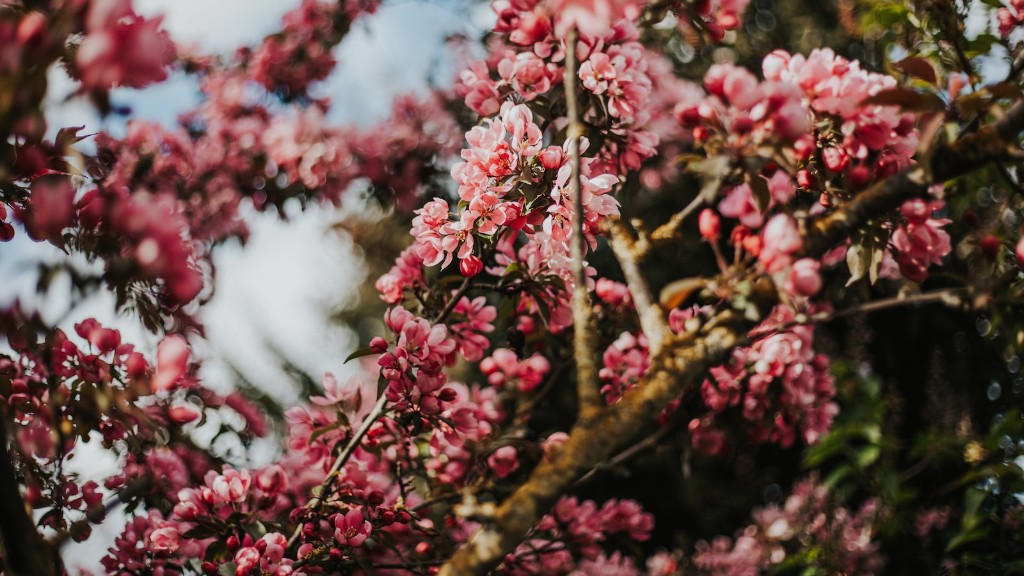Reasons To Prune Weeping Cherry Trees
It’s natural to think that pruning a tree has the same goal – to reduce its size. But when it comes to the weeping cherry tree, the art of pruning can serve a much more intricate purpose. Pruning is an essential step taken to protect the tree’s health, while also allowing it to have a better shape and maximize its bloom potential. Pruning can help to improve its eye appeal, allowing the tree to properly develop its branches.
Weeping cherry tree branches are prone to breakage and wind damage due to their heavy blooms and long, easily-weakened branches drooping to the ground. The sooner you prune your tree, the easier it’ll be for it to properly develop its branches, become more resistant against the weight of its flower clusters, and reduce the risk of breakage.
Experts agree that the best time to prune a weeping cherry tree is in the late spring or early summer, when the tree has finished flowering but is still in its active growing stage. If the tree has been neglected and the branches are old and large, pruning during the dormant season (winter) is also advised.
Tools And Techniques Used To Prune Weeping Cherry Trees
When it comes to pruning, there’s a variety of techniques used depending on the shape of the tree.
The most common pruning techniques used for a weeping cherry tree are heading cuts and thinning cuts. Heading cuts remove the entire branch or part of a branch, usually performed on young trees. Thinning cuts are usually the main practice for older trees, where select branches and twigs are removed to reduce the overall size of the tree.
It’s best to use pruning shears to cut small- to medium-sized branches, a handsaw for larger branches, and anvil-type or bypass shears or a lopper/saw combination tool for different sizes of branches.
Additional Tips To Prune Weeping Cherry Trees
Here are some additional tips to remember when pruning a weeping cherry tree –
-Choose branches that are crisscrossing or rubbing against each other.
-Avoid heading cuts unless absolutely necessary, as this could lead to an unnatural-looking tree.
-Don’t be afraid to go back and adjust your cuts.
-Make sure to wear protective gear, such as goggles and protective clothing, when using sharp tools.
-Avoid pruning close to the graft.
-Be sure to remove any broken or dead branches throughout the year, as these can easily spread disease and attract pests.
– never remove more than 1/4 of the canopy at any one time.
-Finally, try to keep the top of the tree slightly higher than the sides.
What To Avoid When Pruning Weeping Cherry Trees
When it comes to pruning a weeping cherry tree, there are some general rules that can’t be overlooked.
One of the most essential steps taken when pruning a tree is making sure not to cut too much of it at one go. It’s best to remove no more than 1/4 of the canopy at a given time. Also, never remove any part of the tree that’s already been damaged or weakened.
Additionally, steer clear of cutting the buds on the upper part of the trunk even if they don’t have any visible shoots – this can cause a reduction in the number of sweet cherry fruits produced by the tree in the next year.
Time To Prune
Regardless of where you live, the best timing for pruning a weeping cherry tree differs depending on environmental conditions. Pruning too early in the season can lead to slow growth, as the cold weather delays the tree’s response to cutting.
In colder climates, wait until late winter or early spring to perform pruning, when the tree is just beginning to bud. In warmer climates, the optimal time for pruning is usually from late spring to early summer. This allows the tree to maximize the amount of sunlight it’s receiving.
Terms And Renovation Pruning
Terminal pruning is the practice of removing terminal branches (woody shoot growing on the end of the stem) in order to reduce the tree’s overall height, as well as bringing its shape closer to the desired one. This technique is advised if the tree is set over the maximum desired height.
Renovation pruning, on the other hand, is widely used to invigorate the tree’s growth and bring its shape closer to the desired one. This will also stimulate a better response to pruning, as dormant buds will be encouraged to grow. It’s best to do this when the tree is still young and it’s easier to grab a hold of the tree’s branches.
Restoring Pruned Weeping Cherry Trees
Weeping cherry trees can take the hard pruning but spring and early summer is when the extreme pruning must be done. Trees that have suffered from heavy pruning need to be enlarged with a gradual trimming, taking it in steps until the desired shape is reached.
If some of the branches have been neglected and haven’t grown in years, it’s best to remove them altogether as they can be prone to diseases. Pruning should be done by following the natural progression of the tree’s growth pattern.
Conclusion
Pruning is an essential part of ensuring your weeping cherry tree remains healthy and vibrant for years to come. Pruning opens up the tree’s canopy and allows for a better shape and more flower production. Pruning can also reduce the risk of breakage due to the tree’s heavy blooms, while having the potential to yield much needed nutrients.
When pruning a weeping cherry tree, it’s essential to remember to use the right tools, avoid heading cuts, and remove branches that are crisscrossing or shaving. The best time to prune differs according to the climate in your area, but late winter or early spring is the general consensus. Finally, always remember to take your time when pruning – never remove more than 1/4 of the canopy at any one time.


